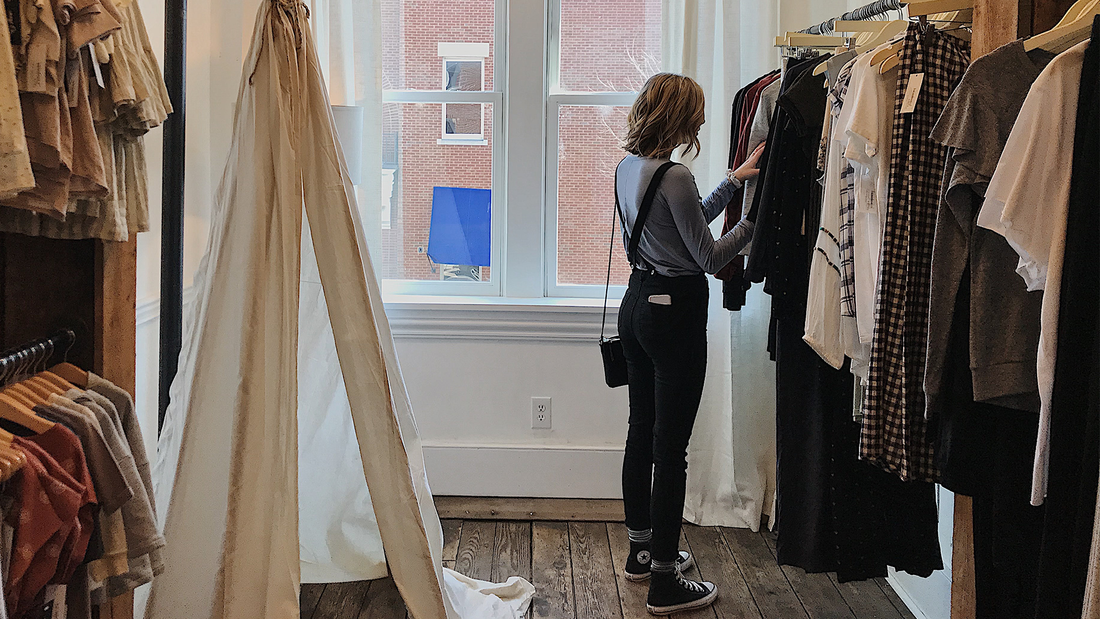

What Is Vanity Sizing and How Does It Make Body Measurements Confusing?
As you navigate your fitness journey, finding the right clothing fit along the way can pose challenges. Vanity sizing is one of the factors you have to deal with. What is vanity sizing? This marketing strategy results in inconsistent sizing charts and dramatic differences in fit between styles. It plays a role in the confusion surrounding body measurements, body image and your wellness goals.
What Is Vanity Sizing?
Clothing manufacturers often manipulate sizes to make them larger than the standard. For example, body measurements that usually would be a size 10 may be a size 8 or 6 instead. The goal of this practice is to boost customer satisfaction, creating a positive brand experience. Customers may feel more confident and pleased with their appearance and their fitness progress when they can choose smaller sizes of clothes and still get the fit they want.
What Is the Psychological Impact?
This sizing method plays on consumer psychology by tapping into the emotional aspect of clothing selection. When a consumer fits into a smaller size than they typically wear, it can trigger a positive emotional response of accomplishment and attractiveness, especially for those working toward specific fitness goals. Consumers gravitate toward brands that make them feel good about themselves.
Unfortunately, the inconsistency in vanity sizing meaning can also lead to a distorted perception of progress. You might get conflicting information from your measurements compared to your clothing sizes.
What Are the Issues With Body Measurements and Clothing Sizes?
The adoption of vanity sizing has resulted in a lack of standardized measurements across the fashion industry. Each brand may have different interpretations of clothing sizing, making it challenging for consumers to rely on traditional sizing numbers. A person who typically wears a size 10 may find themselves fitting into a size 6 in one brand and a size 12 in another, causing frustration. When you mark the milestones of your body composition journey based on sizing achievements, this can create feelings of discouragement.
Vanity sizing also plays into unrealistic body image expectations. As individuals encounter smaller clothing sizes that fit comfortably, they may subconsciously associate these sizes with an ideal body shape. This can lead to distorted self-perception and a skewed understanding of what constitutes a healthy and realistic body size. In turn, this may contribute to body dissatisfaction and the perpetuation of harmful beauty standards. On your wellness journey, it may interfere with your perception of your progress, your assessment of your body shape and your future goals.
What Is Vanity Sizing Doing for Fitness Planning?
Vanity sizing has become a subtle yet influential force within the fitness community, shaping perceptions of progress and self-worth and even influencing workout routines. In the pursuit of physical well-being, individuals often rely on tangible markers of success, and changing clothing sizes can serve as a numerical representation of their journey. However, the distorted reality created by vanity sizing introduces a myriad of challenges.
One of the most significant effects is on the psychological well-being of fitness enthusiasts. The positive results of workout regimens lead to physical transformations, and the allure of fitting into smaller sizes can be a powerful motivator. Vanity sizing plays into this desire by offering the illusion of accelerated progress. The positive reinforcement associated with downsizing clothing can create a false sense of accomplishment, impacting self-esteem and contributing to a skewed perception of one's actual progress. This could lead someone to believe that they have reached a goal prematurely, causing them to alter their fitness practices too early.
Moreover, the inconsistency in sizing across workout apparel brands adds a layer of complexity to the quest for reliable metrics. As individuals transition between brands, arbitrary variations in sizing can lead to confusion and frustration. What might be a size medium in one brand could translate to a size small or large in another, making it difficult to accurately gauge achievements based on clothing fit.
How Can You Navigate Vanity Sizing on Your Fitness Path?
When you struggle with inconsistency in sizing and styles, start by prioritizing your personal comfort and fit over the number on the tag. Instead of focusing on a specific size, shift your mindset to how the clothing feels and complements your shape. This will help you make more effective, informed choices about clothing that you are far more likely to wear. It also eliminates the challenges associated with arbitrary sizing standards. Clothing that moves well, both in and out of the gym, often becomes more popular.
Look for Sizing Charts and Feedback
Many brands provide sizing charts to help consumers find the proper size in that particular brand based on measurements. Track your progress with ongoing measurements so that you can assess your body structure changes instead of relying on potentially inconsistent sizing. This also helps ensure you can choose clothing that fits well regardless of sizing.
Advocate for Standardization
Many consumers underestimate the value of advocacy in the marketplace. Consumer awareness and preference can encourage brands to adopt more standardized sizing charts. What is vanity sizing if not just a marketing tool? Demanding transparency and consistency in sizing practices is one way consumers can influence the industry to offer accurate measurements over marketing strategies. This could create a more consumer-friendly, transparent market.
Embrace Technology
Modern technology has a valuable role in any fitness journey. ZOZOFIT provides real-time monitoring of your body composition, providing you with current measurements so you can see changes at will. Instead of looking at arbitrary sizing numbers, use technology to your advantage to track your progress based on how your body is physically responding. What you see on the ZOZOFIT app is a much more accurate depiction of your actual measurements than what you are seeing on any clothing label out there.
What Does Vanity Sizing Mean for You?
Although manufacturers intend their sizing options to enhance the shopping experience, differing standards have created a web of confusion surrounding body image, body measurements and wellness. The arbitrary assignment of smaller sizes has far-reaching societal implications and potential negative effects for those striving to reach workout and diet milestones.
What is vanity sizing going to mean for your fitness goals? If you rely on clear, unchanging metrics such as body measurements instead, you can track your progress with greater confidence. For more tips about how to use your body measurements for your goal tracking, check out ZOZOFIT today.
![zf-w-[168px] zf-h-[40px]](http://zozofit.com/cdn/shop/t/15/assets/logo-desktop.png?v=117713855448369080381753069598)


